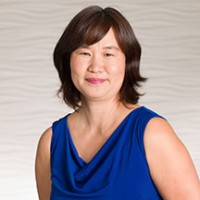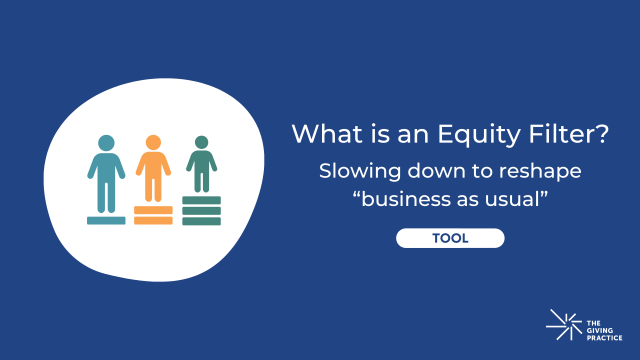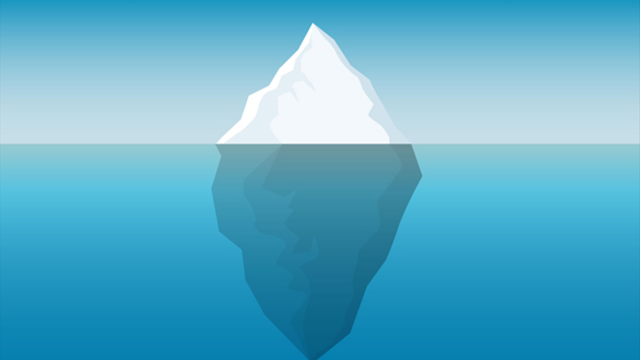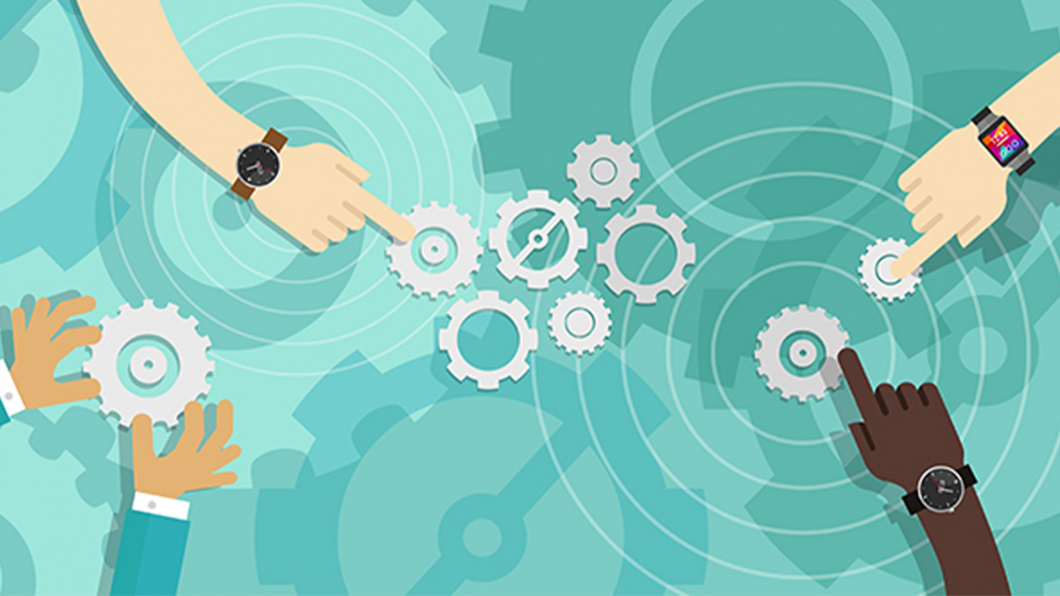
In an interview for Philanthropy's Reflective Practices, Jan Jaffe spoke with Katie Hong, a Raikes Foundation director focused on youth and young adult homelessness, about systems thinking.
Jan Jaffe: Katie — Our project team has been describing reflective practice as a discipline of mobilizing and managing yourself to get to better outcomes. How about you?
Katie Hong: For me it means several things: 1) understanding that you, as an individual, are part of a system. This is true at work, in your family or as a member of your community. Recognizing what part of the system you are in — in your various roles at any given time – is important; and 2) at the same time, every individual, no matter what part of the system you are in, is powerful and how you show up in the world is a choice. That is, you have the power to either “cast a light or a shadow” to others around you and have positive or negative impact in the world, no matter what part of the system you are in. How you show up matters. Plus, as an actor in a system, you have the power to shift the system too.
This is important to recognize because funders are in a privileged position. My words and actions can mean more and carry more weight because I have influence over how resources are allocated.
I am passionate about the topic of reflective practice because I believe in the power of “self” as a tool and this is critical to having impact in the world.
Jan: I like the way you set up this creative tension between self and system. When did you first start thinking about them in relation to each other?
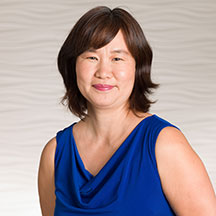
Katie: This concept of recognizing that the “self” has a lot of choice and power and at the same time, understanding that every individual is always playing a role within any system resonates with me, especially as a woman of color. Growing up in largely a white, homogeneous community, I just thought my experience of dealing with racism, stereotypes and expectations from others as a woman and a person of color were unique and mine alone. It wasn’t until I went to college and met other Asian Americans and Asian American women that I realized that my experience wasn’t unique at all! But that it was (unfortunately) a shared and common experience that people of color and in my case, Asian Americans, experience as a group in this country. So, recognizing that I am an individual and at the same time, always part of any system is a concept that resonates with me.
Jan: You’ve mentioned some frameworks that helped you better understand self and system in the context of philanthropy. Would you share them with us?
Katie: This has been a life long journey and I still feel like I’m learning. But there are two concrete examples and tools that helped transform how I think about the world. First is participating in the Power Lab, an intense experiential learning workshop created by Barry Oshry. It takes you into an imagined world where you are assigned different roles and scenarios. You live in this “different/made-up world” for several days shadowed by “anthropologists” who are documenting what is happening. The last two days are made up of “exiting” that world and listening to the anthropologists describe what happened from multiple perspectives. It reminds me of the Sufi story of how we’re always touching or seeing just one part of the elephant. Well, this exercise and experience helps you “see” the whole elephant. In similar roles in any given system, you have common, shared experiences no matter who you are as an individual. At the same time, how you act and respond as an individual matters. So, it was a powerful and insightful experience as how you act in that world likely is an example of how you react and act in the real world. (The quote “everywhere I go, there I am” is true.)
The second powerful tool was learning about and from Parker Palmer, one of my favorite authors and reflective leaders. Growing up, I thought leadership and power came from institutional power and influence and it was all about “hard skills” like effective communications, strategic thinking, and having a powerful presence. Nobody ever told me that it was also an internal journey and that leadership and influence also comes from doing the hard work of inner reflection and awareness. That is, you need to go to places internally that you don’t necessarily want to address or face but it is so necessary if you want to positively affect change in the world. Parker explains this journey beautifully in his book “Let your Life Speak.” I have read and re-read that book multiple times and every time, it is a powerful reminder of the inner journey.
Jan: I remember how excited I was to leave the public sector for a philanthropic organization that had so much more flexibility and permission to support people on the front lines of social change. At first, I felt like the Spy Who Came in from the Cold! Then I began to see that even with all that freedom, systems change is still hard. I had more to learn about sharing power and authority to get to better outcomes. How has that been for you? What practices help you navigate classic dilemmas in philanthropy?
Katie: Almost every issue I have worked on over the last 25 years whether it is ending homelessness or improving educational outcomes for all children and youth are complex, adaptive challenges. They don’t have simple, technical (“silver bullet”) solutions but instead require different solutions based on current environment. Additionally, solutions require change management — that is helping people from multiple sectors to change their beliefs, assumptions and behaviors — a dynamic that I think funders don’t generally pay enough attention to.
I’ve been in different roles in the government sector and in the private philanthropic sector always working with others to drive change. I deploy a couple of practices that help me on a daily basis. First is to recognize that these are hard issues and problems that have been festering for hundreds of years. It helps me stay humble and not get frustrated that we haven’t yet solved ending racism or poverty, for example. Second is to be curious. I ask a lot of questions. At the same time, I pay attention to the inter-personal dynamics and the role I am playing at any given time in my environment. I like the example from Ron Heifeitz of the importance of getting on the balcony and being able to observe yourself as part of any system you are in. How am I showing up today? What’s my impact and influence on others? Are the results and impact what I want? This doesn’t mean that I am always happy or optimistic (not at all. Believe me, I’ve had my days of being pessimistic and frustrated) but regardless, I have an impact on the world. So I may as well be intentional and choose how to show up!
Jan: How about your reflective practice when projects flounder? Can you tell us about a time when an initiative was derailing or just not getting to the outcomes you and your partners hoped for that called on your reflective practice skills?
Katie: I am currently working with grantees and community partners to prevent and end youth homelessness in my home community of Seattle/King County. One of the early investments we made was to support the development of coordinated assessment and engagement so that our community could offer housing to homeless youth based on need and vulnerability. Rather than having individuals rely on “luck of the draw” for support, limited resources could be collectively prioritized to target those most in need of them. The intent was positive and well-meaning and our grantees and partners did their best to create an equitable system. However, what ended up was the creation of a system that was often inefficient and confusing to everyone including youth, service providers and funders.
When I first realized this, my initial reactions were great disappointment, frustration and fear. Fear because I didn’t want to admit to my foundation colleagues and trustees that it wasn’t working. Frustration and disappointment because nobody was happy and everyone wanted to blame everyone else for the disappointing system.
We decided to support key people in the system (funders, service providers, the system “owner” of the coordinated engagement system) to participate in a 3-day workshop on Network Improvement Science, conducted by the Carnegie Foundation for the Advancement of Teaching and we unpacked the system that the “collective we” had built. We were able to “get on the balcony” and observe what we had built and without judgment and finger-pointing, we were able to suggest improvements to the system that we thought would work better. It was a powerful experience that got us back on the same page, pushing for the same goals and not against each other because we were acting out of fear.
Jan: That is a great example of using technical solutions while facing adaptive challenges for a better outcome! It reminds me of a counterintuitive suggestion from Barry Oshrey that “what feels personal is often role-to-role and not personal at all.” It sounds like you were able to respond to the situation in a way that helped everyone hold their roles and stay focused on the task.
Katie: Yes, I love this quote too. It is NOT personal and yet it is and feels personal because you are in it. We are human beings and social creatures so it’s natural to feel and absorb others’ disappointment, anger, appreciation and love.
Barry’s quote though is important for several reasons. First, understanding the different roles in a system is critical if you want to influence behavior change, action and impact. Asking different grantees and partners to do things without understanding their enabling environment and context will not work and lead to frustration and erosion of trust and relationship. Second, I think it also helps to keep you humble and optimistic. Earlier in my career, I used to be more self-critical and judgmental. If I wasn’t able to persuade someone to change their actions or behaviors, I used to blame myself and think “if only” I was smarter, more strategic, effective, etc., I (and only I) could influence change. Now, I know better and realize that I am part of a larger system and there are other factors in play. Recognizing this keeps me humble and less judgmental both of myself and others. And at the same time, we make up the system so we have the power and ability to change systems too. They are not fixed or immovable.
We have big challenges to solve. And in order to make progress, we need less judgmental and more loving people to lead, influence and BE in the world. Change really does start with yourself. Be the change you want to see in the world!
For more information about Reflective Practices, please click here.
